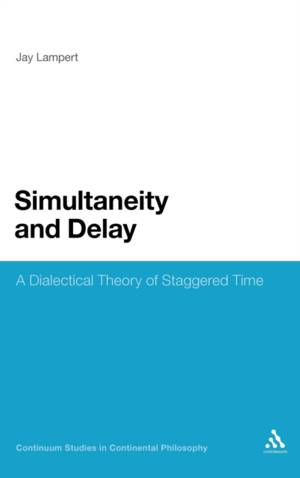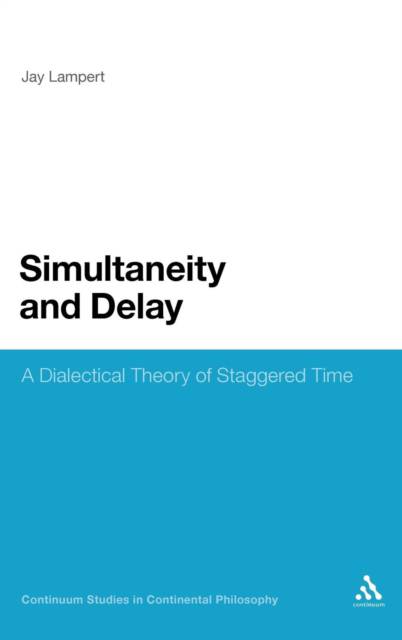
- Afhalen na 1 uur in een winkel met voorraad
- Gratis thuislevering in België vanaf € 30
- Ruim aanbod met 7 miljoen producten
- Afhalen na 1 uur in een winkel met voorraad
- Gratis thuislevering in België vanaf € 30
- Ruim aanbod met 7 miljoen producten
Zoeken
€ 339,45
+ 678 punten
Uitvoering
Omschrijving
Through original speculations on the surprisingly complementary concepts of simultaneity and delay, and new interpretations of the great philosophers of time, this book proposes an innovative theory of staggered time.
In the early 20th Century, Bergson and Husserl (following Einstein) made Simultaneity-what it means for events to occur at the same time-a central motif in philosophy. In the late 20th Century, Derrida and Deleuze instead emphasized Delay-events staggered over distant times. This struggle between convergent and staggered time also plays out in 20th Century aesthetics (especially music), politics, and the sciences. Despite their importance in the history of philosophy, this is the first book to comprehensively examine the concepts of simultaneity and delay. By putting simultaneity and delay into a dialectical relation, this book argues that time in general is organized by elastic rhythms. Lampert's concepts describe the time-structures of such diverse phenomena as atonal music, political decision-making, neuronal delays, leaps of memory and the boredom of waiting; and simultaneities and delays in everyday experience and behaviour.Specificaties
Betrokkenen
- Auteur(s):
- Uitgeverij:
Inhoud
- Aantal bladzijden:
- 272
- Taal:
- Engels
- Reeks:
- Reeksnummer:
- nr. 52
Eigenschappen
- Productcode (EAN):
- 9781441126399
- Verschijningsdatum:
- 12/04/2012
- Uitvoering:
- Hardcover
- Formaat:
- Genaaid
- Afmetingen:
- 157 mm x 236 mm
- Gewicht:
- 566 g

Alleen bij Standaard Boekhandel
+ 678 punten op je klantenkaart van Standaard Boekhandel
Beoordelingen
We publiceren alleen reviews die voldoen aan de voorwaarden voor reviews. Bekijk onze voorwaarden voor reviews.











